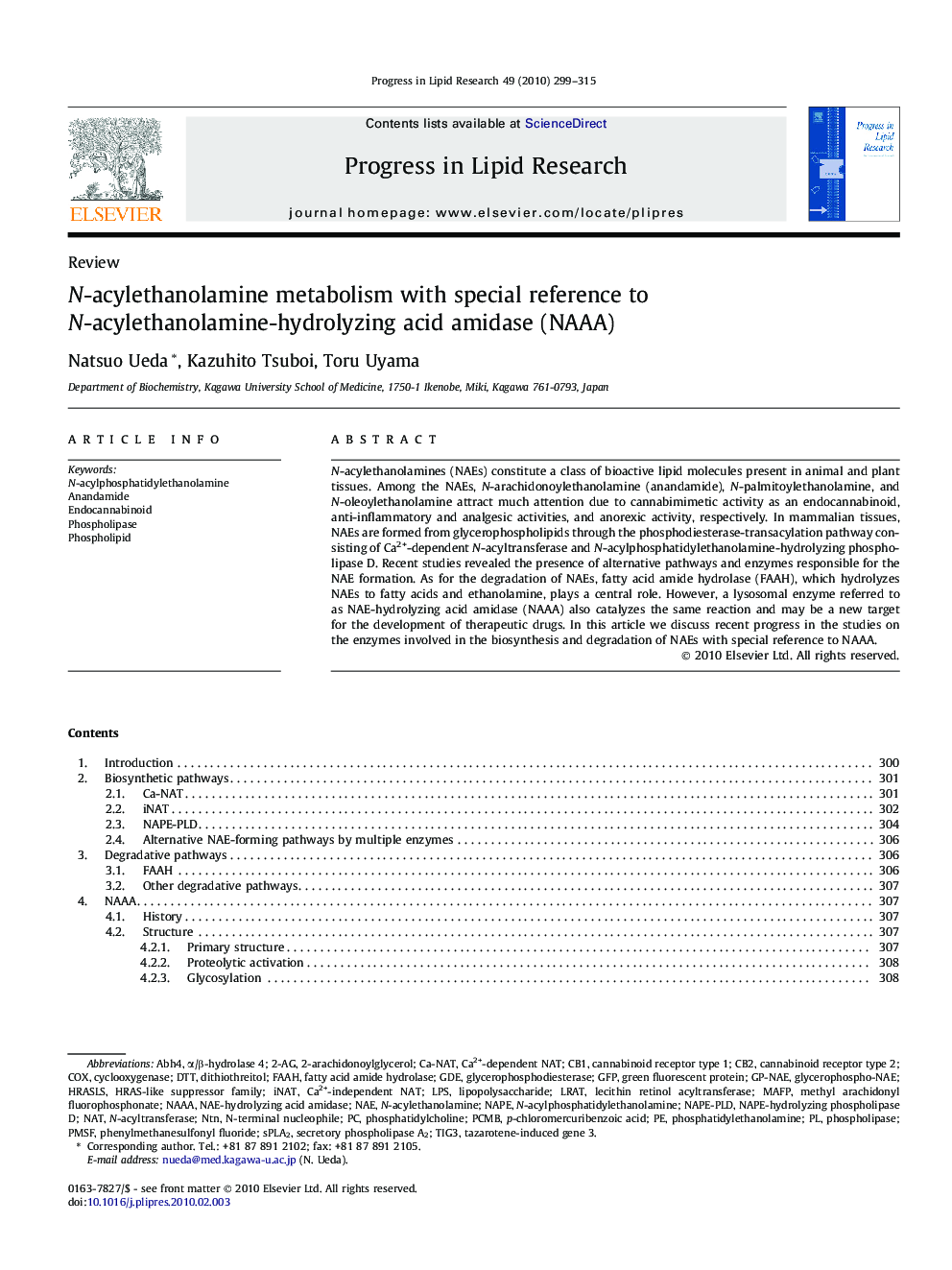| Article ID | Journal | Published Year | Pages | File Type |
|---|---|---|---|---|
| 2019208 | Progress in Lipid Research | 2010 | 17 Pages |
Abstract
N-acylethanolamines (NAEs) constitute a class of bioactive lipid molecules present in animal and plant tissues. Among the NAEs, N-arachidonoylethanolamine (anandamide), N-palmitoylethanolamine, and N-oleoylethanolamine attract much attention due to cannabimimetic activity as an endocannabinoid, anti-inflammatory and analgesic activities, and anorexic activity, respectively. In mammalian tissues, NAEs are formed from glycerophospholipids through the phosphodiesterase-transacylation pathway consisting of Ca2+-dependent N-acyltransferase and N-acylphosphatidylethanolamine-hydrolyzing phospholipase D. Recent studies revealed the presence of alternative pathways and enzymes responsible for the NAE formation. As for the degradation of NAEs, fatty acid amide hydrolase (FAAH), which hydrolyzes NAEs to fatty acids and ethanolamine, plays a central role. However, a lysosomal enzyme referred to as NAE-hydrolyzing acid amidase (NAAA) also catalyzes the same reaction and may be a new target for the development of therapeutic drugs. In this article we discuss recent progress in the studies on the enzymes involved in the biosynthesis and degradation of NAEs with special reference to NAAA.
Keywords
LRAT2-arachidonoylglycerolFAAHLPSINaTNAPE-PLDsPLA2NTNMAFPCB2N-acylphosphatidylethanolamineN-terminal nucleophileN-acylethanolaminelecithin retinol acyltransferaseN-AcyltransferaseNAAApCMBp-chloromercuribenzoic acidCOXCB1PMSFNAE2-AGNATGFPDTTanandamideendocannabinoidcyclooxygenaseFatty acid amide hydrolaseSecretory phospholipase A2GDEdithiothreitolphosphatidylcholinephosphatidylethanolaminePhospholipasePhospholipidPhenylmethanesulfonyl fluoridelipopolysaccharidemethyl arachidonyl fluorophosphonateNAPEcannabinoid receptor type 1green fluorescent proteinGlycerophosphodiesterasecannabinoid receptor type 2
Related Topics
Life Sciences
Agricultural and Biological Sciences
Food Science
Authors
Natsuo Ueda, Kazuhito Tsuboi, Toru Uyama,
